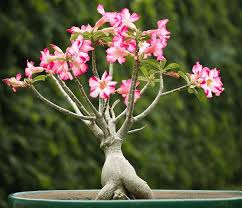**The Most Popular Types of Porcelain Flowers**

Porcelain flowers encompass a diverse array of floral species, each celebrated for its unique beauty, symbolism, and cultural significance. While countless varieties exist, several types of porcelain flowers have emerged as perennial favorites, cherished for their timeless elegance and universal appeal.
1. **Rose**: The rose, with its timeless beauty and romantic symbolism, is one of the most beloved flowers in porcelain art. Crafted with meticulous attention to detail, porcelain roses capture the delicate layers of petals and the graceful curvature of the bloom, evoking feelings of love, passion, and admiration.
2. **Peony**: Renowned for its opulent blooms and lush foliage, the peony holds a special place in porcelain flower crafting. Symbolizing prosperity, good fortune, and happiness, porcelain peonies are often featured in decorative arrangements and ceremonial displays, adding a touch of elegance and grandeur to any setting.
3. **Orchid**: With its exotic allure and ethereal beauty, the orchid is a popular subject in porcelain artistry. Whether depicting the delicate petals of a Phalaenopsis or the intricate structure of a Cymbidium, porcelain orchids capture the essence of these revered flowers, symbolizing refinement, grace, and luxury.
4. **Lotus**: Revered for its purity and spiritual significance, the lotus holds a prominent place in Eastern cultures and porcelain art. Depicted in various stages of bloom, from bud to full blossom, porcelain lotus flowers convey themes of enlightenment, resilience, and inner peace, serving as powerful symbols of spiritual awakening and renewal.
5. **Cherry Blossom**: The fleeting beauty of cherry blossoms has captivated artists and admirers for centuries, inspiring countless depictions in porcelain art. Symbolizing the transient nature of life and the beauty of impermanence, porcelain cherry blossoms evoke a sense of ephemeral beauty and the joy of springtime.
6. **Lily**: With its graceful form and delicate fragrance, the lily is a popular motif in porcelain flower crafting. Whether portraying the elegant trumpet-shaped blooms of the Easter lily or the exotic allure of the calla lily, porcelain lilies exude a sense of purity, elegance, and refinement.
7. **Tulip**: Symbolizing love, prosperity, and new beginnings, the tulip is a beloved flower in porcelain artistry. Whether capturing the vibrant hues of a Dutch tulip field or the delicate petals of a single blossom, porcelain tulips evoke the beauty of springtime and the promise of new growth.
In conclusion, these popular types of porcelain flowers represent a rich tapestry of floral beauty and cultural symbolism, each offering a unique expression of nature’s splendor and human creativity. Whether adorning decorative displays, ceremonial arrangements, or artistic compositions, porcelain flowers continue to captivate hearts and inspire admiration as cherished symbols of beauty, elegance, and cultural heritage.
**Popular Varieties of Porcelain Flowers**
Porcelain flowers encompass a vast array of floral species, each distinguished by its unique characteristics and cultural significance. Among the multitude of varieties, several types of porcelain flowers have garnered widespread acclaim for their timeless beauty and symbolic meanings.
1. **Rose**: The rose stands as an enduring symbol of love, beauty, and romance, making it one of the most popular choices in porcelain flower artistry. Crafted with intricate detail, porcelain roses capture the essence of their natural counterparts, with delicate petals and vibrant colors that evoke feelings of passion and admiration.
2. **Peony**: Known for its lush blooms and rich symbolism, the peony holds a prominent place in porcelain flower crafting. Representing prosperity, honor, and happiness, porcelain peonies exude opulence and elegance, making them a favored choice for decorative arrangements and ceremonial displays.
3. **Orchid**: With its exotic allure and graceful beauty, the orchid is a beloved subject in porcelain art. Whether portraying the delicate petals of a Phalaenopsis or the intricate patterns of a Dendrobium, porcelain orchids capture the ethereal essence of these revered flowers, symbolizing refinement, luxury, and spiritual enlightenment.
4. **Lotus**: Revered for its purity and spiritual significance, the lotus is a recurring motif in porcelain art across Eastern cultures. Depicted in various stages of bloom, from bud to full blossom, porcelain lotus flowers convey themes of enlightenment, resilience, and inner peace, serving as potent symbols of spiritual awakening and renewal.
5. **Cherry Blossom**: The fleeting beauty of cherry blossoms has long captivated artists and admirers alike, inspiring countless depictions in porcelain artistry. Symbolizing the ephemeral nature of life and the beauty of transience, porcelain cherry blossoms evoke a sense of fleeting beauty and the joy of springtime.
6. **Lily**: With its elegant form and delicate fragrance, the lily is a popular choice in porcelain flower crafting. Whether portraying the purity of the Easter lily or the exotic allure of the calla lily, porcelain lilies evoke a sense of grace, elegance, and refinement, symbolizing purity and rebirth.
7. **Tulip**: Symbolizing love, prosperity, and new beginnings, the tulip is a beloved motif in porcelain artistry. Whether capturing the vibrant hues of a Dutch tulip field or the delicate petals of a single blossom, porcelain tulips exude the beauty of springtime and the promise of renewal.
In conclusion, these popular varieties of porcelain flowers represent a rich tapestry of floral beauty and cultural symbolism, each offering a unique expression of nature’s splendor and human creativity. Whether adorning ceremonial displays, decorative arrangements, or artistic compositions, porcelain flowers continue to captivate hearts and inspire admiration as cherished symbols of beauty, elegance, and cultural heritage.

